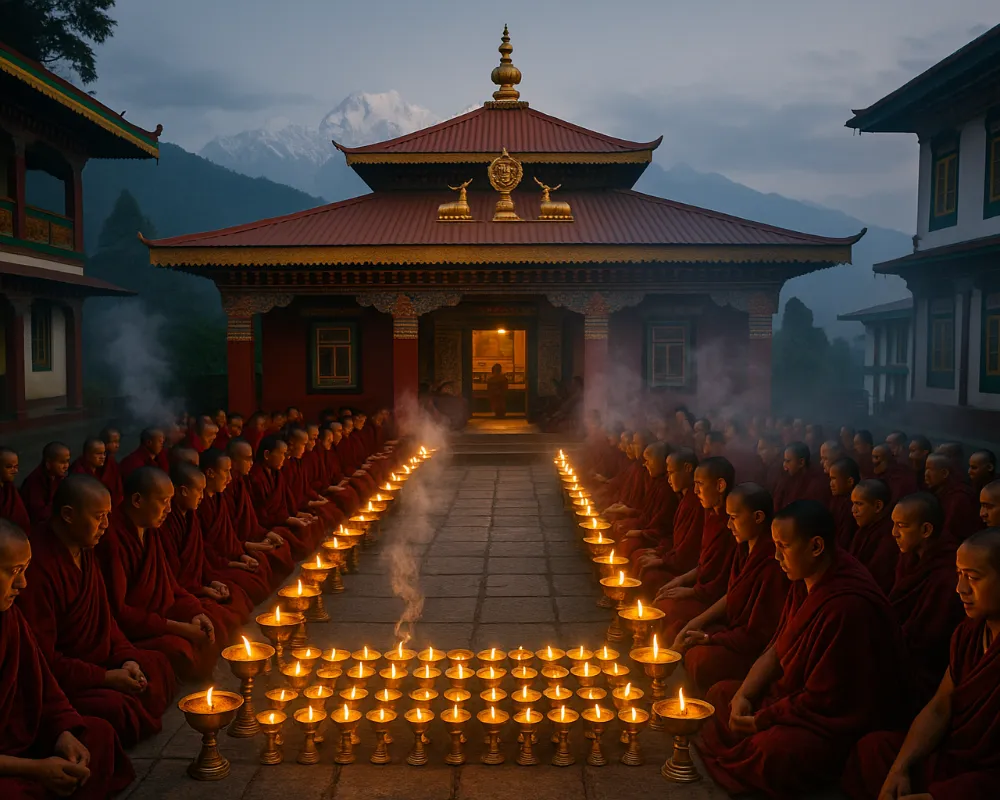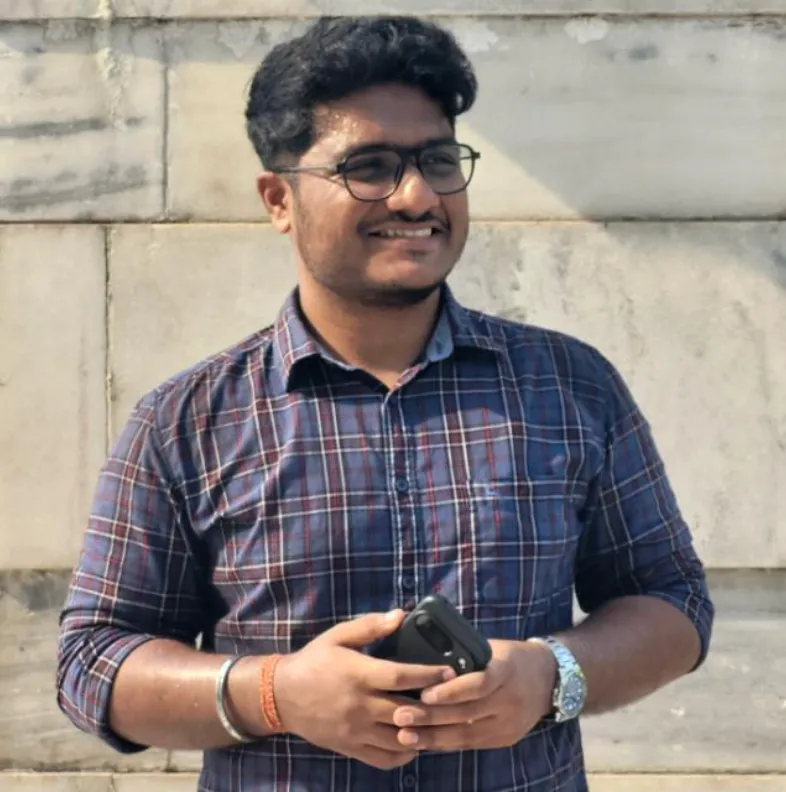A Festival Beyond Ritual
Every year, as the monsoon clouds drift away from the towering peaks of Kanchenjunga, the guardian mountain of Sikkim, the people gather to celebrate Pang Lhabsol — a festival unlike any other in the Himalayas.
More than ritual, more than celebration, Pang Lhabsol is a living vow. It binds the land, its deities, and its people in a sacred relationship of devotion and protection. Through solemn prayers, heartfelt offerings, and the majestic Pangtoed Cham dance — often called the Tiger Dance — the people of Sikkim renew their bond with the guardian deities, especially Mount Kanchenjunga, whose blessings are believed to bring harmony, abundance, and protection.
What is Pang Lhabsol?
Pang Lhabsol is the renewal of a vow — a time when the people of Sikkim honour their guardian deities and give thanks for the protection that surrounds their lives.
At its heart is the Neysol prayer, chanted by monks to invoke blessings for peace, harvests, and harmony. Families bring offerings from their fields — rice, maize, fruits, butter, and chang — while laymen take part in the Pangtoed Cham, the warrior dance where discipline and faith are woven into movement.
From the Tsuklakhang Royal Chapel in Gangtok, coloured wool-strings known as bey-tson are consecrated and carried outward to sacred mountains, lakes, and caves. In this way, the festival symbolically binds the entire land into one sacred circle beneath the gaze of Kanchenjunga.
For the people of Sikkim, Pang Lhabsol is not only a tradition. It is a promise: that as long as the guardians are honoured, they will continue to watch over the hidden land with peace and prosperity.
Why is Pang Lhabsol Celebrated?
At its core, Pang Lhabsol is an act of gratitude and remembrance. It honours the guardians who protect Sikkim and renews the bond that ties the people to them.
It is thanksgiving for peace in the kingdom, for rains that come in season, for fields that yield harvest, and for the harmony that allows diverse communities to live side by side.
Historically, the festival also carried the weight of an oath. At Tsuklakhang, in the presence of the Chogyal, the Sheylen ritual was performed — a vow of loyalty to the guardians, to the Dharma, and to the Dharma King. This made Pang Lhabsol more than prayer; it was a spiritual constitution, binding people, king, and deities together.
Origins: The Hidden Land and Its Guardians
The story begins in the eighth century, when Guru Rinpoche (Padmasambhava) blessed Sikkim as a bayul, a hidden land destined to be a sanctuary of Dharma. The mountains and lakes were alive with fierce spirits, but instead of banishing them, Guru Rinpoche bound them by sacred oaths, transforming them into guardians.
At the centre of this covenant stood Khangchendzonga, the mighty mountain deity, entrusted with ensuring prosperity and protection. Alongside him stood Mahakala (Yeshey Gompo), Pawo Hungri, and countless deities of lakes and caves — all guardians of the hidden land.
Centuries later, Lhatsun Chenpo, one of the great saints of Sikkim, renewed the vow when he revealed the sacred Neysol text and offered thanksgiving prayers to the guardians. Under Chador Namgyal, the third Chogyal of Sikkim, the festival took its full form, with the addition of the Pangtoed Cham, a martial dance revealed in a vision.
Later, Chogyal Palden Thondup Namgyal declared Pang Lhabsol the National Day of Sikkim, affirming its central place in the cultural and spiritual identity of the land.
Rituals and Ceremonies: How it was Celebrated Then
In earlier times, Pang Lhabsol was celebrated with grandeur that united the sacred, the royal, and the ordinary.
- Neysol prayers filled Tsuklakhang for three days.
- Bey-tson offerings were carried across Sikkim to sacred sites, linking mountains, lakes, and valleys in a spiritual network.
- People’s offerings included rice, maize, fruits, butter, and chang — gratitude to the guardians.
- The Pangtoed Cham brought the guardians alive before the people. Dancers wore fierce masks of Kanchenjunga and Mahakala, their silk sashes flowing, their swords gleaming. Steps like the Vajra Pada (Thunderbolt Step) symbolized Guru Rinpoche’s victory over chaotic forces, while chants of “Lha Gyal Lo!” proclaimed the triumph of the divine.
- The Sheylen oath reaffirmed loyalty to the guardians, the Dharma, and the Dharma King.
The festival was the heartbeat of Sikkim — land, people, deities, and king bound together in a single vow.
Pang Lhabsol 2025: Dates and Location
- Start Date: 07 September 2025
- End Date: 07 September 2025
- Location: Sikkim — celebrated at Tsuklakhang Royal Chapel, Gangtok, and across monasteries and villages of the state.
Pang Lhabsol 2025 will once again bring people together in gratitude and devotion, continuing a centuries-old vow of unity, protection, and guardianship. A must visit for spiritual and scenic lovers.
Pang Lhabsol Today and Its Significance
Though some parts of the festival once declined — with the Cham dance falling quiet for a time — the Neysol prayers never stopped in monasteries like Ralong, Rabongla, and Pemayangtse.
In recent decades, Pang Lhabsol 2025 has found renewed strength, especially at the Tsuklakhang Royal Chapel in Gangtok, where the Pangtoed Cham has been revived with growing public participation. Monks, laymen, villagers, and youth stand together beneath Kanchenjunga’s gaze, renewing the same vow of protection and gratitude. Today, Pang Lhabsol continues to shape Sikkimese identity. It teaches resilience, unity, and gratitude, reminding each generation that while traditions may bend, they do not break
In recent years, Pang Lhabsol has also extended beyond monastery walls into the larger community. On 6 September 2025, a Unity Marathon was held as part of the pre-Pang Lhabsol celebrations in Gangtok, symbolizing harmony and togetherness. The event was graced by the presence of His Royal Highness Prince Palden Gyurmed Namgyal, reflecting the enduring bond between the royal lineage, the people, and the sacred festival..
Beyond Ritual, A Vow for All
Pang Lhabsol is more than a festival — it is a covenant that has lived for centuries under the shadow of Kanchenjunga.
For Sikkim, it is the heartbeat of identity: a reminder that their mountains and lakes are not only landscapes, but living protectors who share in the people’s destiny. Yet its lesson reaches further.
Cham dances are performed across the Himalayas, but Pang Lhabsol stands apart. Its uniqueness lies in the Sheylen oath of loyalty, which bound monarch, people, and guardians together in one promise. No other festival weaves together dance, prayer, and oath in this way.
India is often called a land of festivals, but Pang Lhabsol shows that a festival can also be a constitution of the heart — a binding promise that holds communities together across centuries. From this small Himalayan land, the message rings wide: when people honour their past and stand united in faith and gratitude, even the tallest mountains — Kanchenjunga above all — bow to become guardians.







Leave a Reply